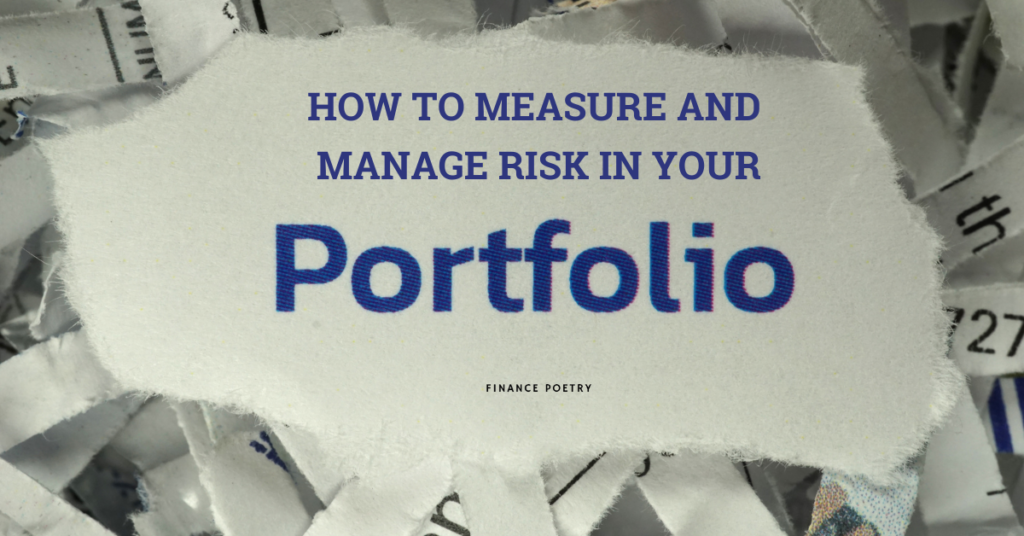Measuring and managing risk in your portfolio is an important part of the investment process.
When investing, it’s important to understand the different types of risks that can affect your investments. The two main types of risk are market risk and credit risk.
| Market risk | Credit risk |
| Market risk is the risk that the value of an investment will decrease due to changes in the overall market. This can include factors such as economic conditions, political events, and natural disasters. Market risk is also known as systematic risk and it affects a large number of investments in a similar way. Market risk can be mitigated by diversifying your portfolio across different asset classes, sectors, and geographies. | Credit risk is the risk that a borrower will default on their debt obligations. This can include factors such as a company’s financial condition, management quality, and industry conditions. Credit risk is also known as unsystematic risk and it is specific to a particular investment or borrower. Credit risk can be mitigated by investing in high-quality debt securities, such as US Treasury bonds, and diversifying your portfolio. |

Here are a few ways to measure and manage risk in your portfolio:
Diversification:
Diversifying your portfolio across different asset classes, sectors, and geographies can help to minimize risk.
By spreading your investments across different types of assets, you can reduce the impact of any one investment on your overall portfolio performance.
Risk management tools:
There are a number of risk management tools available to investors, such as Value at Risk (VaR) and standard deviation.
These tools can help you to quantify the potential risk of your portfolio and make informed decisions about how to manage that risk.
Regular portfolio review:
Regularly reviewing your portfolio can help you to identify and manage potential risks.
This can include monitoring the performance of individual investments, as well as the overall performance of your portfolio.
Asset allocation:
Asset allocation is the process of dividing an investment portfolio among different asset categories, such as stocks, bonds, and cash.
The right asset allocation will depend on your investment goals, time horizon, and risk tolerance. By allocating assets in a way that aligns with your goals, you can potentially reduce your portfolio’s risk.
Hedging:
Hedging is a risk management strategy that aims to reduce the impact of adverse market movements. It can be used to protect against market risk, currency risk and other types of risk.
Hedging can be done by buying or selling derivatives, such as options and futures, or by using other types of financial instruments.
Note: No investment is risk-free and all investments carry some level of risk. It's always important to conduct your own research, including analysis of the company's financial statements, seek professional advice and consult with a financial advisor before making any investment decisions.
1 thought on “How to measure and manage risk in your portfolio”